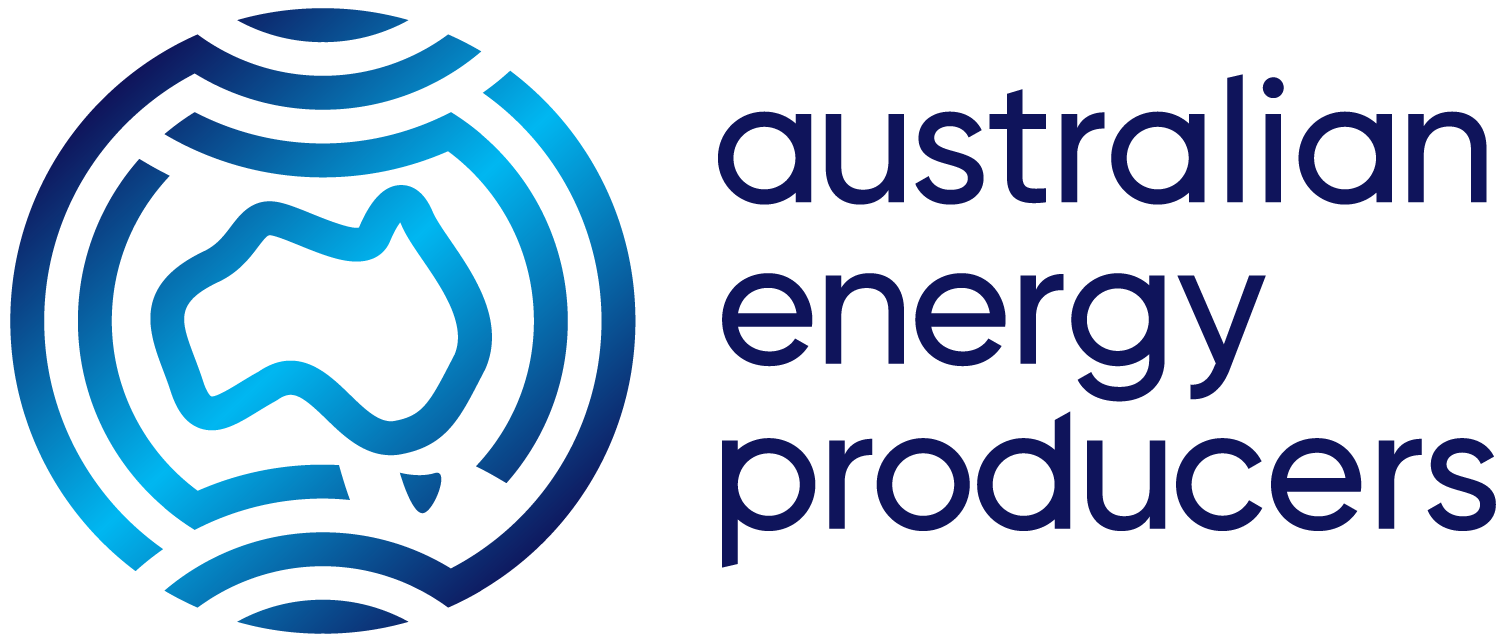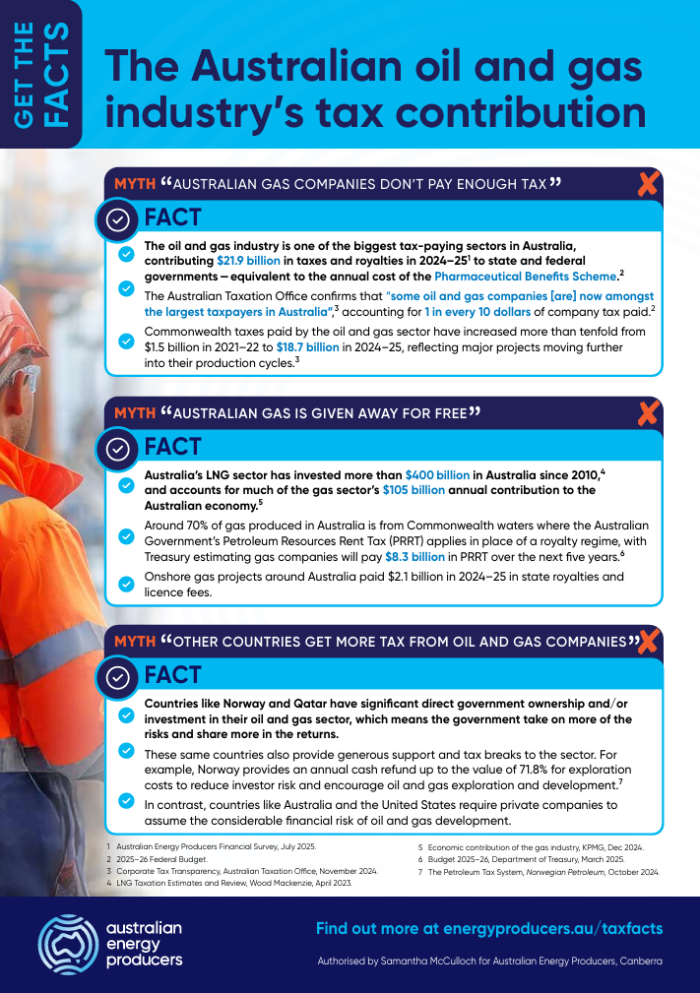The Australian Oil & Gas Industry’s Tax and Royalties Contribution
The Australian oil and gas industry is one of the biggest tax-paying sectors, contributing a record $21.9 billion in taxes and royalties in 2024–25 to state and federal governments – equivalent to the annual cost of the Pharmaceutical Benefits Scheme (PBS).
This takes the industry’s tax and royalties contribution over the past three years alone to almost $60 billion, reaffirming the industry’s substantial and ongoing contribution to the Australian economy and dispelling the myth that Australia’s oil and gas sector does not pay its fair share.
The facts are:
- The industry is the second-biggest corporate taxpayer, accounting for one in every ten company tax dollars paid.
- The Australian Taxation Office has confirmed that “some oil and gas companies [are] now amongst the largest taxpayers in Australia”.
- Commonwealth taxes paid by the oil and gas sector have increased more than tenfold from $1.5 billion in 2021–22 to $18.7 billion in 2024–25.
In addition to the oil and gas industry’s significant tax and royalties contribution, the sector is also a key driver of Australia’s productivity and economic growth, representing 3.7 per cent of Australia’s GDP.
Economic analysis by KPMG found that as well as having a critical role in Australia’s energy mix, natural gas is powering the Australian economy through high levels of employment and productivity, contributing $105 billion a year to the national economy and supporting 215,000 jobs.
MYTH: “AUSTRALIAN GAS COMPANIES DON’T PAY ENOUGH TAX”
FACTS
• The oil and gas industry is one of the biggest tax-paying sectors in Australia, contributing $21.9 billion in taxes and royalties in 2024–25¹ to state and federal governments—equivalent to the annual cost of the Pharmaceutical Benefits Scheme.²
• The Australian Taxation Office confirms that “some oil and gas companies [are] now amongst the largest taxpayers in Australia”,³ accounting for 1 in every 10 dollars of company tax paid.²
• Commonwealth taxes paid by the oil and gas sector have increased more than tenfold from $1.5 billion in 2021–22 to $18.7 billion in 2024–25, reflecting major projects moving further into their production cycles.³
MYTH: “AUSTRALIAN GAS IS GIVEN AWAY FOR FREE”
FACTS
• Australia’s LNG sector has invested more than $400 billion in Australia since 2010,⁴ and accounts for much of the gas sector’s $105 billion annual contribution to the Australian economy.⁵
• Around 70% of gas produced in Australia is from Commonwealth waters where the Australian Government’s Petroleum Resources Rent Tax (PRRT) applies in place of a royalty regime, with Treasury estimating gas companies will pay $8.3 billion in PRRT over the next five years.⁶
• Onshore gas projects around Australia paid $2.1 billion in 2024–25 in state royalties and licence fees.
MYTH: “OTHER COUNTRIES GET MORE TAX FROM OIL AND GAS COMPANIES”
FACTS
• Countries like Norway and Qatar have significant direct government ownership and/or investment in their oil and gas sector, which means the government take on more of the risks and share more in the returns.
• These same countries also provide generous support and tax breaks to the sector. For example, Norway provides an annual cash refund up to the value of 71.8% for exploration costs to reduce investor risk and encourage oil and gas exploration and development.⁷
• In contrast, countries like Australia and the United States require private companies to assume the considerable financial risk of oil and gas development.
CITATIONS
- Australian Energy Producers Financial Survey, July 2025.
- 2025–26 Federal Budget.
- Corporate Tax Transparency, Australian Taxation Office, November 2024.
- LNG Taxation Estimates and Review, Wood Mackenzie, April 2023.
- Economic contribution of the gas industry, KPMG, Dec 2024.
- Budget 2025–26, Department of Treasury, March 2025.
- The Petroleum Tax System, Norwegian Petroleum, October 2024.


